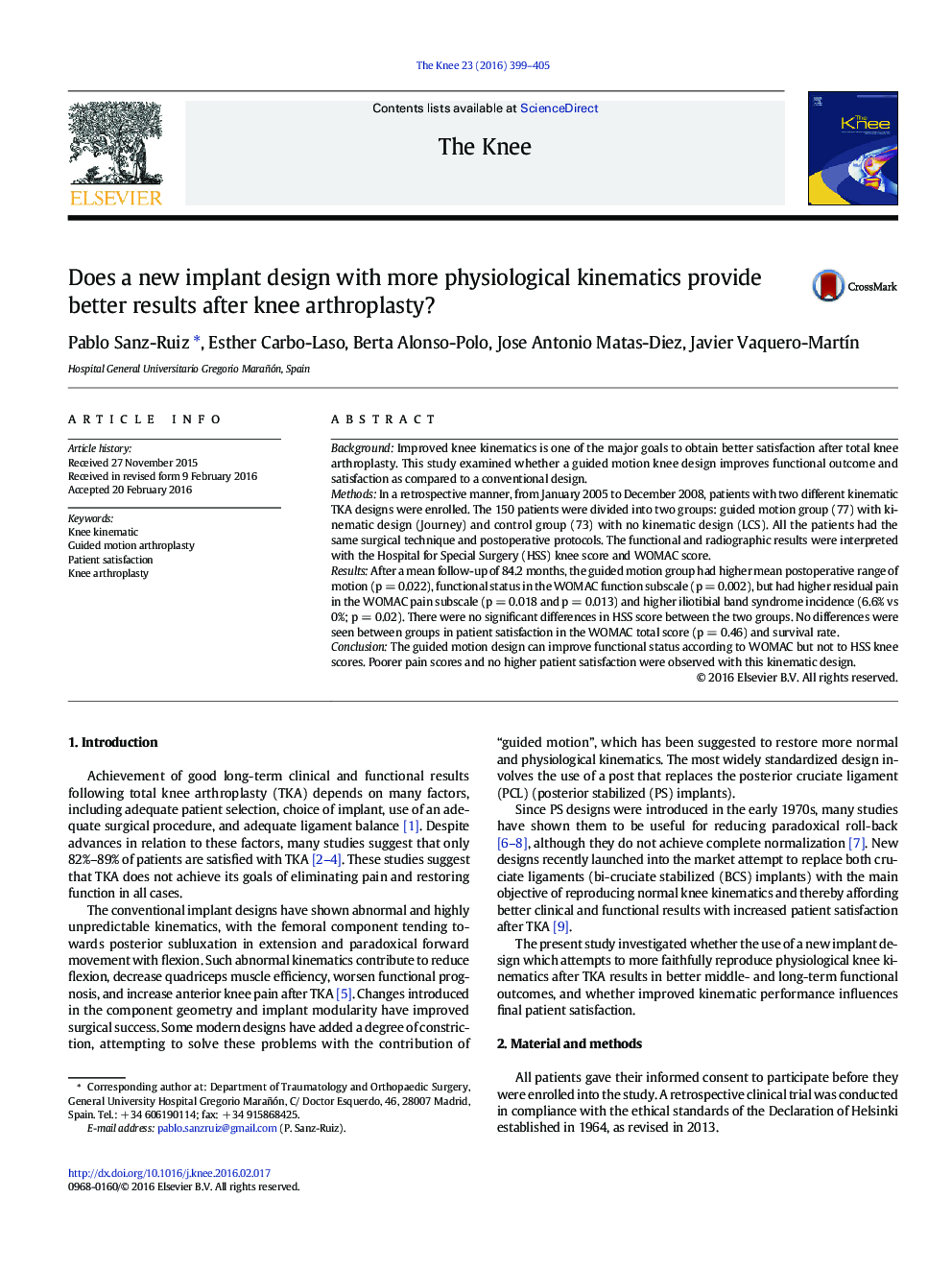| Article ID | Journal | Published Year | Pages | File Type |
|---|---|---|---|---|
| 6211117 | The Knee | 2016 | 7 Pages |
â¢The guided motion implant improves greater range of motion and functional status than normal implant.â¢The aggressive roll-back after TKA leads to had higher residual pain in the WOMAC pain subscale.â¢The guided motion design does not improve patient satisfaction after TKA.
BackgroundImproved knee kinematics is one of the major goals to obtain better satisfaction after total knee arthroplasty. This study examined whether a guided motion knee design improves functional outcome and satisfaction as compared to a conventional design.MethodsIn a retrospective manner, from January 2005 to December 2008, patients with two different kinematic TKA designs were enrolled. The 150 patients were divided into two groups: guided motion group (77) with kinematic design (Journey) and control group (73) with no kinematic design (LCS). All the patients had the same surgical technique and postoperative protocols. The functional and radiographic results were interpreted with the Hospital for Special Surgery (HSS) knee score and WOMAC score.ResultsAfter a mean follow-up of 84.2 months, the guided motion group had higher mean postoperative range of motion (p = 0.022), functional status in the WOMAC function subscale (p = 0.002), but had higher residual pain in the WOMAC pain subscale (p = 0.018 and p = 0.013) and higher iliotibial band syndrome incidence (6.6% vs 0%; p = 0.02). There were no significant differences in HSS score between the two groups. No differences were seen between groups in patient satisfaction in the WOMAC total score (p = 0.46) and survival rate.ConclusionThe guided motion design can improve functional status according to WOMAC but not to HSS knee scores. Poorer pain scores and no higher patient satisfaction were observed with this kinematic design.
